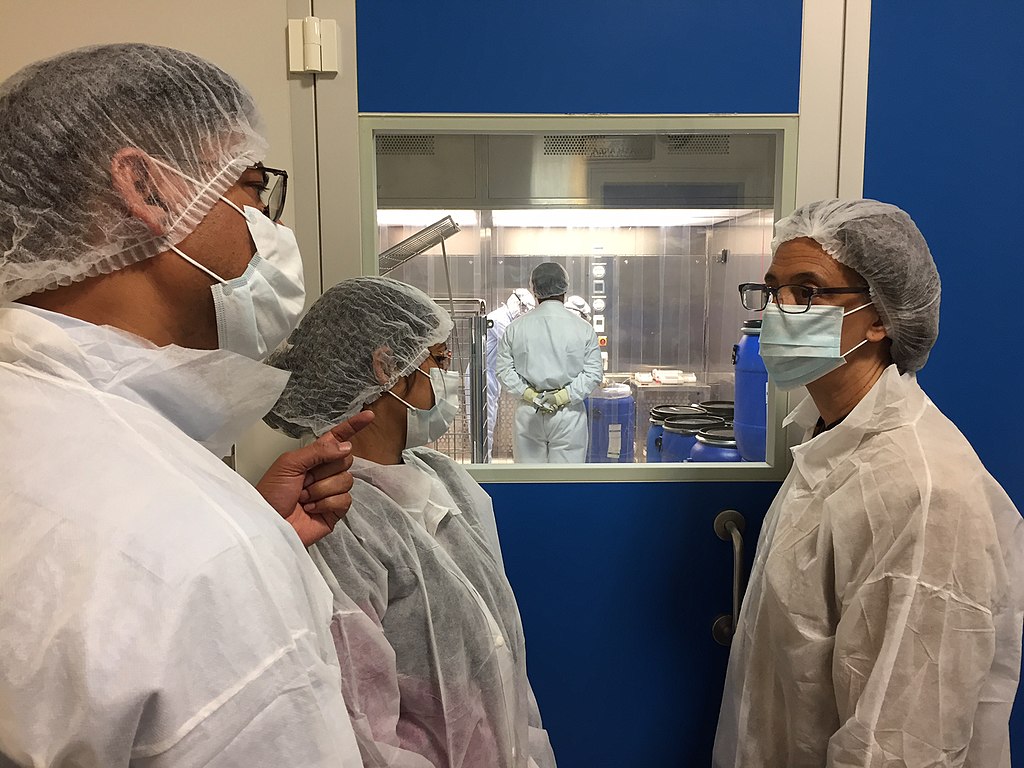People are aware that large factories build products like vehicles or washing machines, but complex manufacturing systems are also needed for pharmaceutical production. The process of mixing medicinal compounds and forming them into tablets, capsules, or liquid solutions is extremely automated with few hands-on tasks. Limitation of hands-on work supports the goal of complete sanitation. Regulations require producers to follow strict cleaning procedures to ensure safe pharmaceutical production.
Cleaning And Sanitation
Workers must clean pharmaceutical production machines between each batch. Cleaning is the term for removing residues left by the materials that passed through a machine. Before starting a new batch, cleaning needs to eliminate all traces of the previous materials. Otherwise, the next batch will be contaminated. The results could contain fillers or pharmaceutical substances, like steroids or hormones, that do not belong in the next batch of pharmaceuticals.
Sanitation is just as essential as cleaning. This step comes after cleaning and is meant to eliminate microbial contaminants like bacteria or viruses. Various chemical agents are used to kill microbial elements that may have come in contact with the vessels and parts that process pharmaceutical ingredients.
The Food and Drug Administration (FDA) requires pharmaceutical plant operators to develop detailed written instructions for cleaning and sanitation procedures of production machines. These instructions cover everything from the strength of cleaning solutions to how to disassemble and reassemble machines for cleaning.
Compliance with cleaning and sanitation procedures is accomplished through validation. Validation is documentation showing that instructions were followed and the correct cleaning and sanitizing agents were used. Confirmation of sanitation is not left to visual inspection alone. Surface samples are tested with on-site laboratory equipment to confirm the absence of contaminants or pathogens.
Pharmaceutical Milling And Granulation
Production machines perform a series of actions upon pharmaceutical ingredients. To produce the end product, ingredients are milled or granulated. They are then blended and pressed into tablets or covered with capsules. The particles left behind by milling or granulating must be removed during cleaning.
Many medicines require that ingredients be reduced to a fine powder. This is accomplished with milling machines that grind down ingredients into smaller particle sizes. Milling is often necessary to mix ingredients in the appropriate proportions. Proportional distribution of ingredients achieves an even distribution of the medicinal ingredient. This is important for dosage uniformity so that each pill contains the same amount of medicine as the other pills.
Other formulations require granulation instead of milling. Granulation collects ingredients that are fine powers and forms them into larger particles. This process is necessary with some ingredients that cannot be depended upon to remain in proper proportion as milled powders. The granules create a stable mix of ingredients and are then compressed into tablets or inserted in capsules.
Workplace Safety In Pharmaceutical Plants
During production runs, pharmaceutical ingredients remain in closed systems that transfer them from machine to machine. This reduces the chance of external contamination but also helps prevent workers from being exposed to substances that may sicken or harm them. Many pharmaceutical substances can cause unpleasant reactions when inhaled or touched because the substances are meant for specific applications.
For this reason, workers typically wear goggles and respirators when working in sensitive areas processing large amounts of ingredients. They put on hazardous material handling suits that they take off after a shift. In this way, they avoid carrying any materials out of the facility where they could expose themselves and others.
Pharmaceutical workers also wear this protective gear as a means of keeping the production facility as clean as possible. The suits keep the dust and micro-organisms on people’s bodies out of the air.
The air itself in a pharmaceutical production facility is often strictly managed. Some clean rooms will have positive-pressure systems that push back incoming air that would contain dust, spores, and viruses.

